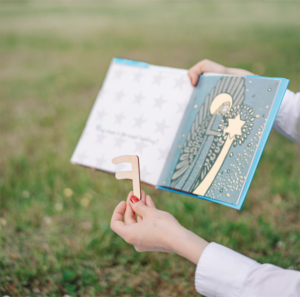If you want your children to be smart, tell them stories.
If you want them to be brilliant, tell them more stories.
– Albert Einstein
Do you like stories?
Simple question, right? Most of us will answer with a quick ‘Yes’. Innumerable communities have bonded through stories since the beginning of human existence. Storytelling is an activity and a teaching method that is welcomed by children of all age groups. Plato in his book Republic has suggested storytelling as a proper pedagogical method to train and teach children. Aristotle in his book Politics has also advised on the stories children should read.
Stories bring a sense of wonder and magic from all around the world. They more than just present facts and events. Human cognition and communication are wrapped around stories. There have been many research studies asserting that stories affect the human brain and bring transformative changes. The two most significant skills required for learning – attention and empathy – are fostered by the continuous flow of the neurochemicals cortisol and oxytocin released in our brain when we immerse ourselves in stories. Read about one such research to understand how stories affect the human brain.

Aside from being a great way to grab the attention of students and engage them in a lesson, stories also:
- Give students a way to understand their world. Even fantasy stories, which on the surface appear to have nothing to do with reality, can present truths that apply to students’ lives.
- Enable students to remember facts. Stories connect the emotional with the logical. This utilisation of multiple areas of the brain strengthens the ability to recall the facts embedded within a story.
- Facilitate students to calm their minds, making them more receptive to new information.
- Sharpen students’ listening skills.
- Build a community of young storytellers amongst students.
- Inspire students to do purposeful talking.

These are just some of the benefits and impact of storytelling in education. In my classroom, we use it as a medium of instruction to support students in overcoming learning difficulties.
We use it for spelling and vocabulary which, when taken by itself, can be an arduous memorisation task. The framework of a story turns that hard work into excitement when we have spelling rules as characters. For example, the letter ‘e’ is a good listener. They often like to hang out silently at the end of a word while their friends do the talking. Storybooks such as the Amelia Bedelia books are great for introducing homonyms. My students enjoy finding spellings within stories that they are reading in class. Another interesting activity is to have the students write their own story using the words they are learning.
In Maths, storytelling can be a great tool to pull in and teach the not-quite-so-number-happy students eg creating and acting out story problems in the context of reality. We got geometric shapes to interact with each other. After all, maths is about explaining and modelling the physical world. I still remember what a dodecahedron is from when my fifth-grade teacher read the book The Phantom Tollbooth to us.
For my students who have sometimes their numbers and letter reversed or facing the wrong direction, a story on Naughty numbers works as a great reminder. They begin fixing the numbers on their own.
During our language and literacy lessons, we get story bags made. These bags include a range of prop contents to capture involvement and interest and help bring the story alive. They provide a visual and tactile stimulus that the children can use to take part in the telling or re-telling of the story. Children of all abilities enjoy using them but they can be particularly useful in helping children who are not interested in reading – for whatever reasons – to enjoy books.
For developing social and emotional skills, we have Social Stories. A social story is a story written by an informed leader, parent or professional, and it is illustrated with appropriate pictures where possible. A social story uses the child’s name, describes an identified social situation, gives pertinent clues for behaviour in that situation and concludes by defining an appropriate response.
Finally a great tip which worked really well, to parents whose child talked reluctantly about anything related to school, I suggested they hold off on the typical ‘How was your day?’ being asked daily at pick up time and try replacing it at dinnertime with ‘What was your art assignment today’ or ‘What did you do with all that snow at recess?’ I learnt that the shy child started talking about studies, lessons, teachers and soon, friends, frustrations and successes when the storytelling was more open ended rather than a report of the day.
Hence, when in doubt about teaching a skill whether at home or at school, just get one story or create a story around the situation. I am sure you will witness a great teachable moment. Remember,
‘After nourishment, shelter and companionship, stories are the thing we need most in the world.’
– Philip Pullman

